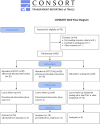Intervening on the Developmental Course of Children With Borderline Intellectual Functioning With a Multimodal Intervention: Results From a Randomized Controlled Trial
- PMID: 32373025
- PMCID: PMC7186416
- DOI: 10.3389/fpsyg.2020.00679
Intervening on the Developmental Course of Children With Borderline Intellectual Functioning With a Multimodal Intervention: Results From a Randomized Controlled Trial
Abstract
An adverse social environment is a major risk factor for borderline intellectual functioning (BIF), a condition characterized by an intelligence quotient (IQ) within the low range of normality (70-85) with difficulties in the academic achievements and adaptive behavior. Children with BIF show impairments in planning, language, movement, emotion regulation, and social abilities. Moreover, the BIF condition exposes children to an increased risk of school failures and the development of mental health problems, and poverty in adulthood. Thus, an early and effective intervention capable of improving the neurodevelopmental trajectory of children with BIF is of great relevance.
Aim: The present work aims to report the results of a randomized controlled trial (RCT) in which an intensive, integrated and innovative intervention, the movement cognition and narration of the emotions (MCNT) was compared to standard speech therapy (SST) for the treatment of children with BIF.
Methods: This was a multicenter, interventional, single blind RCT with two groups of children with BIF: the experimental treatment (MCNT) and the treatment as usual (SST). A mixed factorial ANOVA was carried out to assess differences in the effectiveness between treatments. Primary outcome measures were: WISC III, Child Behavior Checklist (CBCL), Vineland II, and Movement ABC.
Results: MCNT proved to be more effective than SST in the increment of full-scale IQ (p = 0.0220), performance IQ (p < 0.0150), socialization abilities (p = 0.0220), and behavior (p = 0.0016). No improvement was observed in motor abilities. Both treatments were linked to improvements in verbal memory, selective attention, planning, and language comprehension. Finally, children in the SST group showed a significant worsening in their behavior.
Conclusion: Our data show that an intensive and multimodal treatment is more effective than a single domain treatment for improving intellectual, adaptive and behavioral functioning in children with BIF. These improvements are relevant as they might represent protective factors against the risk of school failure, poverty and psychopathology to which children with BIF are exposed in the adult age. Limitations of the study are represented by the small number of subjects and the lack of a no-treatment group.
Clinical trial registration: ISRCTN Registry (isrctn.com), identifier ISRCTN81710297.
Keywords: adverse social environment; behavioral competences; child psychiatry; emotion regulation; intellectual functioning; multimodal rehabilitation; school failure.
Copyright © 2020 Blasi, Zanette, Baglio, Giangiacomo, Di Tella, Canevini, Walder, Clerici, Baglio and the BIF Group.
Figures

References
-
- Achenbach T. M. (2011). “Child Behavior Checklist,” in Encyclopedia of Clinical Neuropsychology, eds Kreutzer J. S., DeLuca J., Caplan B. (New York, NY: Springer; ), 546–552. 10.1007/978-0-387-79948-3_1529 - DOI
-
- Achenbach T. M., Rescorla L. (2001). Manual for the ASEBA School-Age Forms & Profiles: An Integrated System of Multi-Informant Assessment. Burlington, VT: The University of Vermont.
-
- Achenbach T. M., Rescorla L. A. (2007). Multicultural Supplement to the Manual for the ASEBA School-Age Forms & Profiles. Burlington, VT: The University of Vermont.

